If you don't mind, allow me to refactor your code to make it more pythonic and eventually more readable:
class Style():
RED = "\033[31m"
GREEN = "\033[32m"
BLUE = "\033[34m"
RESET = "\033[0m"
print(f"{Style.RED}ONE{Style.RESET}")
print(f"{Style.GREEN}TWO{Style.RESET}")
You can combine the strings like this:
red_text = f"{Style.RED}ONE{Style.RESET}"
green_text = f"{Style.GREEN}TWO{Style.RESET}"
print(f"{red_text} {green_text}")
F-strings were introduced in Python 3.6. If you're using an earlier version of Python, you can simply use string concatenation with a + between strings (instead of the less readable format() function):
print(Style.RED + "ONE" + Style.RESET)
red_text = Style.RED + "ONE" + Style.RESET
Instead of coding everything from scratch, you could also check other Python packages. For example Colorist – a lightweight package that enables you to add style and colour to text messages in the terminal (in full disclosure, I'm the author of this package). This may simplify your code:
from colorist import red, green
red("ONE")
green("TWO")

Another variation if you want to keep the f-strings. The output is the same:
from colorist import Color
print(f"{Color.RED}ONE{Color.OFF}")
print(f"{Color.GREEN}TWO{Color.OFF}")
